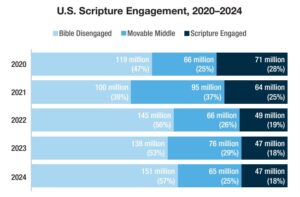
NASHVILLE, Tenn. (BP)–The question the Great Commission Resurgence Task Force brings to the Southern Baptist Convention is not “whether,” but “how” will we facilitate this divine commission. Key proposals this task force is bringing before the SBC could potentially weaken, lessen effectiveness and divide our convention.
Specifically, there are three critical areas of concern:
First is the Cooperative Program. We need to find ways to strengthen and improve the Cooperative Program, but no one can deny that the CP has been a proven, effective plan for funding Southern Baptist entities. Even in times of economic downturn, the CP is very predictable and reliable.
To reduce the Cooperative Program to being a “first among equals” takes away its priority and makes it only one of several ways to support SBC entities. “First among equals” is a failed strategy in management and it will not succeed as a funding strategy. To encourage selective giving is to re-inaugurate societal offerings that would take us back to pre-1925 giving strategies. By definition, a designated offering is given within the limits of one’s knowledge and tempered by one’s interest. It’s a narrowing approach, not a broadening of our efforts.
As one who labored for many years over state and national missions budgets, I can confidently state that any form of societal giving makes financial planning for SBC entities a nightmare. In addition, diluting the Cooperative Program — which societal giving will inevitably do — will force state conventions to re-evaluate the percentage of Cooperative Program receipts they will be able to forward to SBC entities. In a less certain funding environment, prudent planning would almost dictate such action.
If the Cooperative Program is to be the main channel for Southern Baptists to fairly and equitably support all SBC entities, then it must not be lost in a mix of offerings.
Second, if the GCRTF recommendations are adopted, cooperative agreements between the North American Mission Board and the state conventions as we know them will soon be on the guillotine. To remove this effective instrument does not advance a national mission plan into the 21st century, it regresses Southern Baptists to the pre-1950s era. These agreements effectively develop a uniform mission plan for the nation, eliminate duplication of resources and personnel, and provide accountability for both of these critical entities as they advance the gospel in North America.
There are many strengths and advantages to cooperative agreements:
— They define the relationship between state conventions and NAMB and they establish areas of cooperation.
— They ensure that mission work within a given state is planned, strategic and unified, in contrast to parallel or duplicated by multiple entities.
— The planning process involved in the agreements relies on input from those who are closest to the mission field. This is a critically important component.
— Cooperative partnerships bring supportive resources like conferences, material, training and relationships to the mission field.
— The agreements establish a negotiated, uniform mission plan and a national mission strategy for Southern Baptists in North America.
Although much has been said about where Southern Baptist resources are spent in North America, the majority of the North American Mission Board’s funding to states goes to those areas in greatest need of an increased gospel presence. NAMB released numbers in March showing 77 percent of its funding to states goes to work outside the Southern stronghold areas.
Cooperative agreements are the most effective instrument ever used by a mission agency to unify autonomous state conventions and a national mission agency to plan, prioritize, and initiate their combined efforts to reach untouched areas, language and ethnic populations, and mission needs of a nation. I’m sure they can be improved, but wholesale elimination invites an unraveling of the most coherent, effective missions approach any denomination has seen in North America.
The third biggest concern raised by the GCR recommendations is one that’s not articulated in the final report, but certainly has been much discussed. That is whether the North American Mission Board should be merged with the International Mission Board.
Unequivocally, the SBC must have two mission agencies. There are many reasons for both national and international mission entities. The task of each agency is vastly different; thus, the plans and strategies must be uniquely different. There are differences on many issues, and that’s OK — there should be distinct methods and tactics. Both agencies should be recognized as stand-alone entities.
Not since 1845 have Southern Baptists more needed a strong, stand-alone, financially sound national mission agency. Massive change and shift is occurring in North American culture, ethnic mix, morality and spirituality. This is not the time to talk of mergers or reductions. Southern Baptists need an aggressive national mission agency with an aggressive plan and strategy for evangelism, targeted church planting and effective training and deployment of missionaries.
NAMB certainly must keep changing and improving, but the suggestion that North America should be relegated to just another region on the world missions map loses sight of the world-altering role the Church in America has played in propagating the Gospel globally. A national mission agency working with strong and developing state conventions and churches can reach North America with the Gospel of Jesus Christ. Concurrently, while evangelizing and establishing new churches, an essential strong base for funding world missions will be cultivated. If this doesn’t happen, resources for world missions will dry up.
The Cooperative Program, cooperative agreements and two vibrant mission agencies are proven and reliable ways to fund and carry out mission work for Southern Baptists. The hour is late — and the lost world waits at our doorstep — this is a time to move toward and strengthen approaches that unite us, not approaches that send us off in diverse directions.
–30–
Ernest J. Kelley served as executive vice president of the Home Mission Board and as interim president during the transition between HMB and NAMB. He served for 14 years on the leadership staff of the Georgia Baptist Convention.













